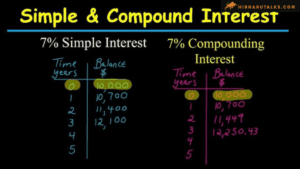
Book Reviews: Must-Reads for Every Investor and Finance Enthusiast
Contents
- 1 Investment and Finance
- 1.1 Book Reviews: Must-Reads for Every Investor and Finance Enthusiast
- 1.2 1. “The Intelligent Investor” by Benjamin Graham
- 1.3 2. “Rich Dad Poor Dad” by Robert Kiyosaki
- 1.4 3. “A Random Walk Down Wall Street” by Burton G. Malkiel
- 1.5 4. “The Little Book of Common Sense Investing” by John C. Bogle
- 1.6 5. “One Up On Wall Street” by Peter Lynch
- 1.7 6. “Common Stocks and Uncommon Profits” by Philip Fisher
- 1.8 7. “Thinking, Fast and Slow” by Daniel Kahneman
- 1.9 8. “The Millionaire Next Door” by Thomas J. Stanley and William D. Danko
- 1.10 Conclusion
- 1.11 FAQs
- 1.11.1 1. How often should I read investment books?
- 1.11.2 2. Are these books suitable for beginners?
- 1.11.3 3. Can I rely solely on these books for investment advice?
- 1.11.4 4. How do I choose the right book for my investment style?
- 1.11.5 5. Are there any newer books that should be added to this list?
- 1.12 Investment and Finance
- 1.13 Ola Electric IPO Launch Today! Shares Subscribed 4.27x – What You Need to Know
Investment and Finance
Book Reviews: Must-Reads for Every Investor and Finance Enthusiast
For anyone deeply involved in the world of investing and finance, continuous learning is key. Books offer invaluable insights, strategies, and real-world examples that can transform your financial acumen. Whether you’re a seasoned investor or just starting out, certain books stand out as essential reads. This article will review some must-read books for investors and finance enthusiasts, providing clear-cut explanations, advantages, disadvantages, and real-world examples for each.


1. “The Intelligent Investor” by Benjamin Graham
Overview
Published in 1949, Benjamin Graham’s “The Intelligent Investor” is considered the Bible of value investing. Graham, known as the father of value investing, introduces principles of fundamental analysis, margin of safety, and the importance of a disciplined investment approach.
Advantages
- Timeless Principles: The principles discussed are timeless and have influenced many successful investors, including Warren Buffett.
- Comprehensive: Covers a broad range of topics from basic investing principles to advanced strategies.
- Practical Advice: Provides practical advice on analyzing financial statements and evaluating investment opportunities.
Disadvantages
- Dense Content: The book’s content can be quite dense and challenging for beginners.
- Outdated Examples: Some examples may seem outdated in today’s market context.
Example
Graham’s concept of “margin of safety” advises investors to purchase stocks at a price significantly below their intrinsic value, reducing the risk of loss. For instance, if a stock’s intrinsic value is estimated at $100, Graham would recommend buying it for $70 or less.


2. “Rich Dad Poor Dad” by Robert Kiyosaki
Overview
“Rich Dad Poor Dad” by Robert Kiyosaki offers a personal finance perspective that challenges traditional financial wisdom. The book contrasts the financial philosophies of Kiyosaki’s “rich dad” and “poor dad,” emphasizing the importance of financial education and investing.
Advantages
- Accessible Writing: Written in an engaging and accessible manner, making complex financial concepts easier to understand.
- Focus on Financial Education: Emphasizes the importance of financial education and investing in assets that generate passive income.
- Inspiration: Provides motivational insights and practical tips on how to achieve financial independence.
Disadvantages
- Controversial Advice: Some of Kiyosaki’s advice, such as leveraging debt to invest, may be controversial or risky for some readers.
- Lack of Technical Details: The book is more focused on mindset and motivation rather than detailed financial strategies.
Example
Kiyosaki discusses the concept of buying income-generating assets, like real estate or stocks, to build wealth. For instance, investing in rental properties that generate monthly income can lead to financial freedom and long-term wealth.


3. “A Random Walk Down Wall Street” by Burton G. Malkiel
Overview
Burton G. Malkiel’s “A Random Walk Down Wall Street” provides an in-depth look at various investment strategies, including the Efficient Market Hypothesis (EMH). Malkiel argues that stock prices are unpredictable and that a passive investment strategy often outperforms active management.
Advantages
- Empirical Evidence: Supports its arguments with empirical evidence and historical data.
- Variety of Strategies: Covers a wide range of investment strategies, including stocks, bonds, and real estate.
- Simplicity: The writing is straightforward, making complex concepts accessible to readers.
Disadvantages
- Focus on Passive Investing: Malkiel’s endorsement of passive investing may not suit investors looking for active management strategies.
- Limited Focus on Individual Stocks: The book may not provide in-depth analysis of individual stocks or sectors.
Example
Malkiel’s support for index funds is based on the premise that they offer broad market exposure and low fees, often outperforming actively managed funds over the long term. For instance, investing in an S&P 500 index fund allows investors to gain exposure to 500 of the largest U.S. companies.


4. “The Little Book of Common Sense Investing” by John C. Bogle
Overview
John C. Bogle, founder of Vanguard Group, authored “The Little Book of Common Sense Investing” to advocate for low-cost index fund investing. Bogle’s philosophy centers around the idea that investors can achieve long-term success by minimizing costs and investing in broad-market index funds.
Advantages
- Cost-Effective: Emphasizes the importance of low-cost investing, which can significantly enhance returns over time.
- Clear Writing: Presents complex investing concepts in a clear and concise manner.
- Strong Evidence: Provides strong evidence and arguments supporting index fund investing.
Disadvantages
- Limited Focus: Focuses primarily on index fund investing, which may not appeal to those interested in active management or alternative investments.
- Repetition: Some concepts may be repetitive for readers familiar with investing basics.
Example
Bogle advocates for investing in a total market index fund that tracks the entire stock market, such as the Vanguard Total Stock Market Index Fund. This approach offers broad diversification and low fees, which can help investors achieve consistent returns over the long term.
5. “One Up On Wall Street” by Peter Lynch
Overview
In “One Up On Wall Street,” Peter Lynch shares his investment philosophy and strategies from his time managing the Fidelity Magellan Fund. Lynch’s approach emphasizes investing in companies with strong growth potential and understanding the businesses you invest in.
Advantages
- Practical Insights: Provides practical insights from Lynch’s successful investing career.
- Focus on Growth Stocks: Offers strategies for identifying promising growth stocks.
- Engaging Style: Written in an engaging and relatable style.
Disadvantages
- Individual Stock Focus: The book focuses heavily on stock picking, which may not suit all investors.
- Market Changes: Some strategies may need adjustment due to changes in market conditions.
Example
Lynch discusses investing in companies that are leaders in their industries or have unique competitive advantages. For instance, he might recommend investing in a tech company with innovative products and strong growth potential.


6. “Common Stocks and Uncommon Profits” by Philip Fisher
Overview
Philip Fisher’s “Common Stocks and Uncommon Profits” explores the qualitative aspects of investing in growth stocks. Fisher emphasizes the importance of understanding a company’s management, competitive advantages, and long-term prospects.
Advantages
- Qualitative Focus: Offers insights into evaluating the qualitative aspects of companies, such as management quality and competitive position.
- Detailed Analysis: Provides detailed criteria for assessing growth stocks.
- Timeless Wisdom: Fisher’s principles remain relevant and applicable today.
Disadvantages
- Complexity: The book’s qualitative analysis can be complex and challenging for beginners.
- Less Focus on Quantitative Analysis: May not provide enough emphasis on quantitative financial metrics.
Example
Fisher suggests looking for companies with strong management teams and a clear vision for the future. For instance, investing in a company with a visionary leader and a robust growth strategy can lead to substantial long-term gains.
7. “Thinking, Fast and Slow” by Daniel Kahneman
Overview
Though not exclusively about investing, Daniel Kahneman’s “Thinking, Fast and Slow” provides valuable insights into human behavior and decision-making. Kahneman, a Nobel Prize-winning psychologist, explores how cognitive biases can affect financial decisions.
Advantages
- Behavioral Insights: Offers valuable insights into behavioral finance and the psychological aspects of investing.
- Research-Based: Based on extensive research and experiments.
- Applicable to Investing: Helps investors understand and mitigate biases that can impact their decisions.
Disadvantages
- Not Focused on Investment Strategies: The book is more about decision-making processes than specific investment strategies.
- Dense Content: The content can be dense and challenging for some readers.
Example
Kahneman discusses the concept of “loss aversion,” where people tend to fear losses more than they value gains. Understanding this bias can help investors make more rational decisions and avoid emotional reactions during market fluctuations.
8. “The Millionaire Next Door” by Thomas J. Stanley and William D. Danko
Overview
“The Millionaire Next Door” by Thomas J. Stanley and William D. Danko examines the habits and characteristics of wealthy individuals. The book reveals that many millionaires live frugally and prioritize saving and investing over high spending.
Advantages
- Insightful Research: Based on extensive research and interviews with millionaires.
- Practical Advice: Offers practical advice on building wealth through frugality and smart investing.
- Myth-Busting: Challenges common myths about wealth and success.
Disadvantages
- Limited Focus on Investing: Focuses more on personal habits than specific investment strategies.
- Generalizations: Some findings may not apply to all individuals or investment scenarios.
Example
The book highlights that many millionaires live modestly and prioritize saving over conspicuous consumption. For instance, they may choose to drive
used cars and live in modest homes while investing the difference.


Conclusion
The books reviewed here provide a range of perspectives and strategies for investors and finance enthusiasts. From the foundational principles of value investing in “The Intelligent Investor” to the behavioral insights of “Thinking, Fast and Slow,” each book offers unique insights that can enhance your financial knowledge and investment approach.
Whether you’re looking to understand fundamental investing principles, explore growth investing strategies, or gain behavioral insights, these must-reads offer valuable lessons for every investor. By integrating the knowledge gained from these books into your investment strategy, you can make more informed decisions and work towards achieving your financial goals.
FAQs
1. How often should I read investment books?
It’s beneficial to read investment books regularly to stay updated with new strategies and perspectives. Aim to read at least one book per year to continuously expand your knowledge.
2. Are these books suitable for beginners?
While some books are more advanced, many offer foundational knowledge suitable for beginners. Start with books like “Rich Dad Poor Dad” for a more accessible introduction to investing.
3. Can I rely solely on these books for investment advice?
Books provide valuable insights, but it’s important to complement them with practical experience, financial news, and advice from financial professionals.
4. How do I choose the right book for my investment style?
Consider your investment goals and style. For value investing, “The Intelligent Investor” is a great choice. For growth investing, try “One Up On Wall Street.” Choose books that align with your interests and goals.
5. Are there any newer books that should be added to this list?
The field of finance is constantly evolving. Stay updated with recent publications and reviews to discover new and relevant books for your investment journey.





















2 comments